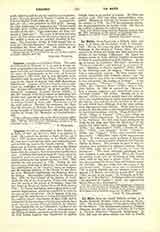

Lagrene , PIERRE, a missionary in New France, b. at Paris, November 12 (al. October 28), 1659; d. at Quebec in 1736. He entered the Society at Paris, October 10 (al. October 2), 1677, studied philosophy at La Fleche (1679-81), and after teaching some time, was ordained priest, and in 1694 was sent to the Canada mission. After a short stay at Lorette, spent in the study of the Huron language, he was stationed (1697-1701) at Sault St. Louis with the Iroquois, then returned to Lorette for a year. In 1704 he was back at Sault St. Louis, where he remained until transferred to Montreal in 1707, of which residence he was named superior in 1716. This position he still occupied in 1720. During the last eleven years of his stay in Montreal, besides his spiritual ministrations to the transient bands of Indians, and the ordinary ministry of the Church, he was director of the Montreal Congregation des Hommes, then in its infancy. This sodality, affiliated to the Roman, May 3, 1693, by the General of the Society of Jesus, under the title of the Assumption of Our Lady, passed into the hands of the priests of St-Sulpice, when the last Jesuit at Montreal, Father Bernard Well, died in 1791. To Father Lagrene it owes in great part its admirable organization, which has enabled it to resist to the present the test of time. On August 10, 1710, Lagrene had the satisfaction of seeing the completion of the sodality chapel, commenced May 24, 1709, and in taking part in the ceremony of its blessing with the then local superior, Father Francois-Vaillant de Gueslis. It was Joseph-Sere de La Colombiere, brother of the distinguished Jesuit, Claude, who, as vicar-general of the Bishop of Quebec, presided and blessed the chapel. In 1723 Father Lagrene was transferred to Quebec College, there to be prefect of schools. He filled this position until 1735, but other responsibilities were added. Minister in 1724-25, he became director of the sodality in 1730. In 1735 his increasing infirmities incapacitated him for further work. He died at the College of Quebec the following year.
ARTHUR EDWARD JONES

